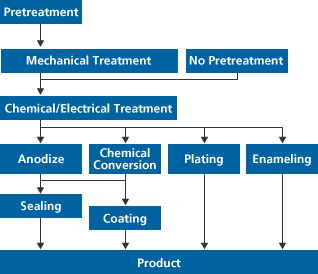Aluminum Processing
Forming (pressing, bending, drawing, etc.)
Aluminum can be bent easily for use in various applications. One forming method employs a press/die and a punch. Plates and extruded structural angles are formed through various bending methods -- pure bending, guide-bending, or wind-bending. In these methods, the material to be drawn is placed on a die and then drawn into its hole with a punch.
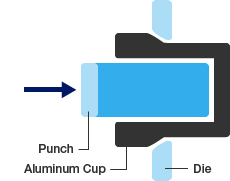
Joining
Joining is a key process used when manufacturing safe structures with complicated shapes. Four methods are used to join aluminum parts: welding, brazing, mechanical joining, and bonding.
Major joining methods
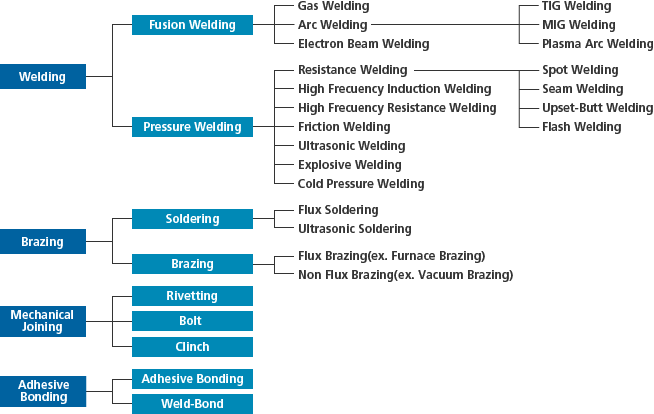
| Welding | Arc welding is frequently used with aluminum. This type of welding works by generating an electrical arc between the material and the electrode. TIG and MIG are two types of arc welding commonly used with aluminum. |
|---|---|
| Brazing | In this joining process, an alloy having a lower melting point than the materials to be joined is melted between two materials. |
| Mechanical joining | Mechanical joining uses rivets, bolts or similar connectors, or connects materials by using bent plates. |
| Bonding | In this process, a bonding material is applied to the surfaces to be joined together. |
Machining
Machining involves finishing products with tools, such as drills, turning tools or end mills. Machining centers, milling machines, lathes, and other machine tools may be used.
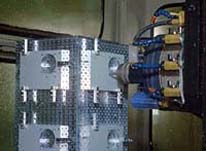
Cutting
Items may be cut with shears, disc saws, band saws, jigsaw, or similar machines.
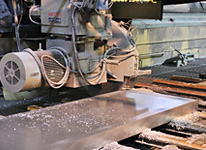
Numerically controlled saws allow large plates to be cut, even into circular or irregular shapes.
Surface Treatment
Typical surface treatment methods for aluminum include anodic oxide coating, painting, and coloration.
Aluminum surface treatment
